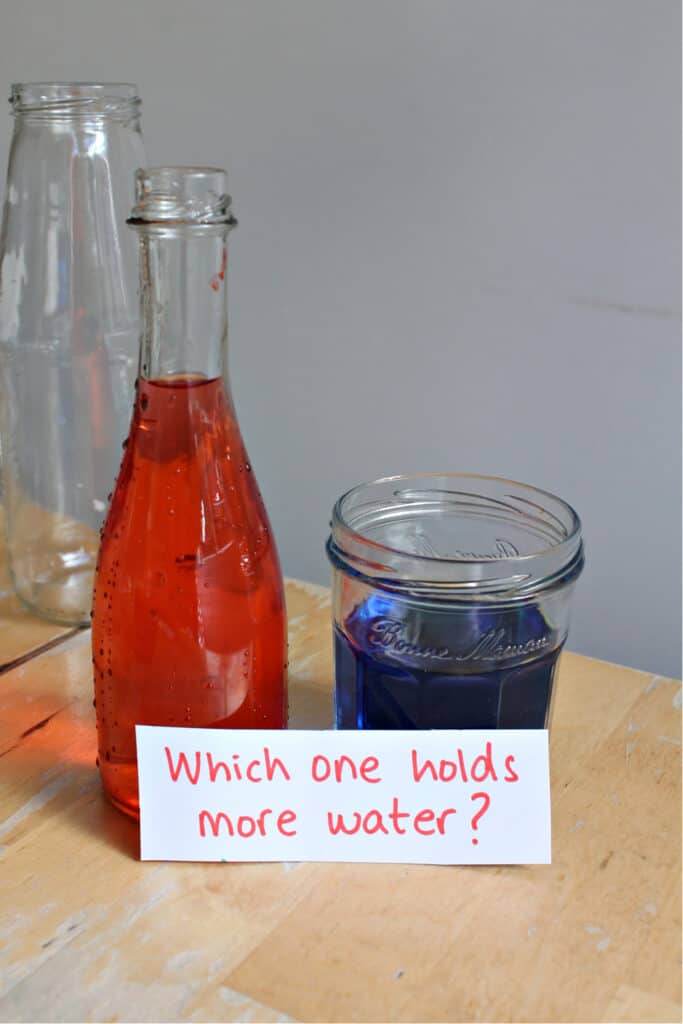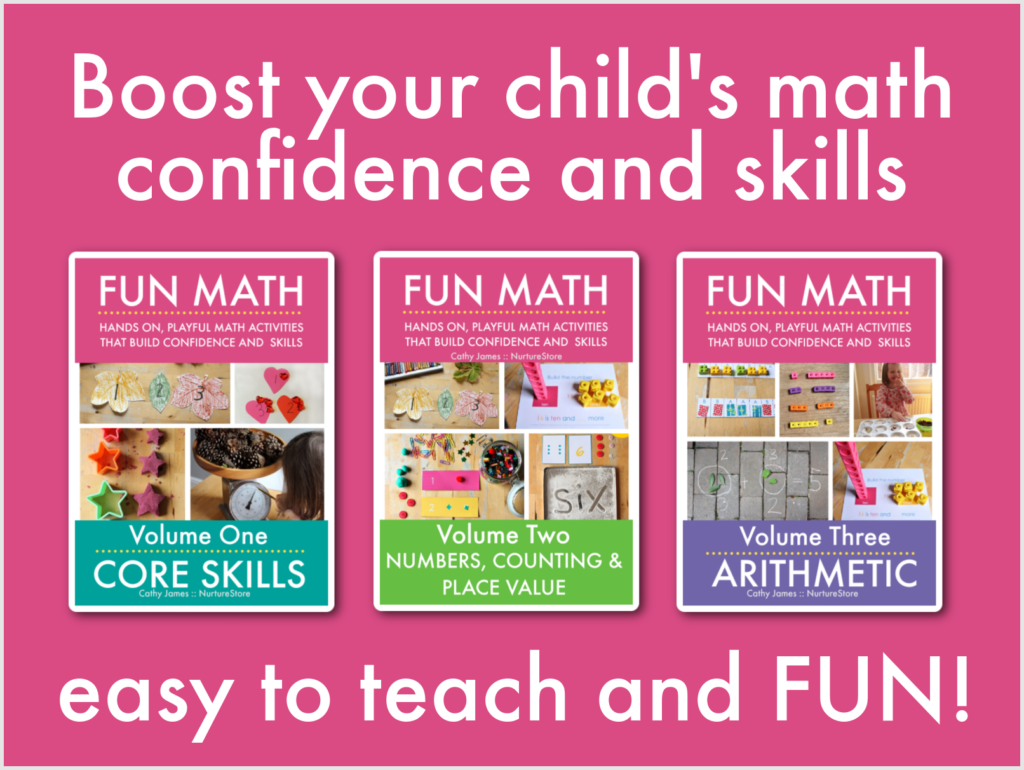Set up a water-play discover centre to learn about volume with these top tips.
Learning about volume activity using water
Magic Fun Math lessons!
Fun Math is an easy to teach, highly effective math curriculum based on play and hands-on learning.
All the lessons are designed to be fun and memorable, so children enjoy their lessons and feel confident.
The lessons are easy for teachers and parents to use, in class or at home.
These are the magic lessons where children really see, understand, and can apply math concepts. They are especially suited to children who don’t like math, lack confidence, don’t understand math the way they are currently being taught, or just want to play.
SEE MORE AND TRANSFORM YOUR MATH TEACHING HERE.
In math, as with all things, it’s so important that children have the opportunity to learn through real experiences before they move onto ‘in your head’ activities.
When learning about volume, children need to see and feel the capacity of containers to understand the concept before they can go on to being able to calculate the volume of a shape on paper.
NurtureStore is your go-to resource for these hands-on, creative learning activities that put the magic back into learning. We have ‘the fun lesson’ for a huge variety of math and literacy skills. In this activity we’re playing with water to learn about volume.
In this lesson, children can:
:: explore volume using water play
:: compare the volume of different containers
:: measure volume using cups and spoons, including recording their findings
:: explore colour mixing using fractions
:: use mathematical language including volume, capacity, more, less, bigger, and smaller

Materials needed
:: a variety of containers in different shapes and sizes
:: water
:: jugs, spoons, cups
:: food colouring (optional)
:: writing materials

How to set up a volume discovery centre
Set up a table, indoors (perhaps on a rug or large towel to catch spills) or outdoors.
Set out a variety of differently-shaped/sized containers, spoons, jugs, and cups that your children can use to fill, pour, and re-fill.
Provide plenty of water. You might like to dye some of the water with food colouring to make it easier for your children to see the different levels of water within the containers.
Write out a set of questions and vocabulary to get your children started with their mathematical enquiries, including:
- Which container is taller?
- Which container is the smallest?
- Which container holds the most water?
- How many spoonfuls fill this up?
- How many cups can this hold?
- bigger
- smaller
- more
- less
You can also include materials for mark making and recording findings: a chalk board and chalk or clipboards with paper and pens.

Then invite your children to play and explore.
They can use the question prompts and their own curiosity to fill, empty and refill their containers.
Invite them to make up their own questions and to investigate answers.
They can keep a count of cups and spoonfuls on the writing materials.

As they play, lots of mathematical language can come into practice, using vocabulary such as bigger, smaller, more, less, biggest, smallest, volume, how many, height and width.
They have the opportunity to count and add.
Let them lead the way with their enquiries, but you can support their learning by reflecting on what they are noticing and asking extension questions. Using the phrase “I wonder…” is a great prompt:
I wonder how many cups you’d need to fill this bottle?
I wonder which one of these bottles can hold the most water?
It’s fun to have your children guess which container will hold the most water before you measure – especially if you can find a container that looks smaller but in fact has a bigger capacity!

Colour mixing extension
You can also use this activity to explore colour mixing and fractions.
Set out the water discover centre with water dyed in the three primary colours of red, blue and yellow.

Invite your children to use this primary-coloured water in their play to explore what happens then they mix the colours.
Pour some red and some blue water into a container and create purple water.
Mix red and yellow to make orange.
And make green by pouring blue into yellow.
You can incorporate fractions into this play by mixing half a jug of one colour with half a jug of another.
Then try again by mixing a quarter of one colour with three quarters of the other and comparing the shades you have made.

Free math printables
Get access to ALL my free printables by subscribing to my email list.
To download my free printables, you'll need to visit the NurtureStore Printables Library, which is available to all subscribers to my email list, and of course to Play Academy members.
Pop your email address in the form below and you’ll get access to all my free printables, lesson plans, activity ideas, weekly newsletter, and a whole lot more!
After subscribing, be sure to check for the confirmation email. After you confirm your email subscription, we'll send you a welcome email which includes instructions for downloading our free printables.
If you're already subscribed to our email newsletter: check your email for the latest edition of the newsletter where you’ll find a link to access our free printables library - the link is usually at the bottom of the email.
For help accessing our printables, click here.
By subscribing, you consent to our use of your personal data as per our Privacy Policy, which includes agreeing to receiving interest-based email from us.
Transform your teaching with Fun Math
The Fun Math series gives you a math curriculum that is easy to teach and highly effective.
Children love these lessons because they are engaging and fun.
You’ll have a clear set of ready-made math lessons and activities that are simple to lead using our step-by-step lesson guides, and which children really understand.
Be the best math teacher and boost your children’s confidence and skills with Fun Math.
See more and transform your teaching here.





